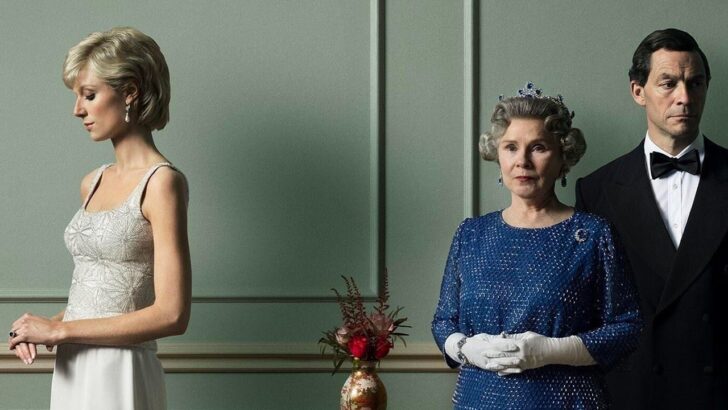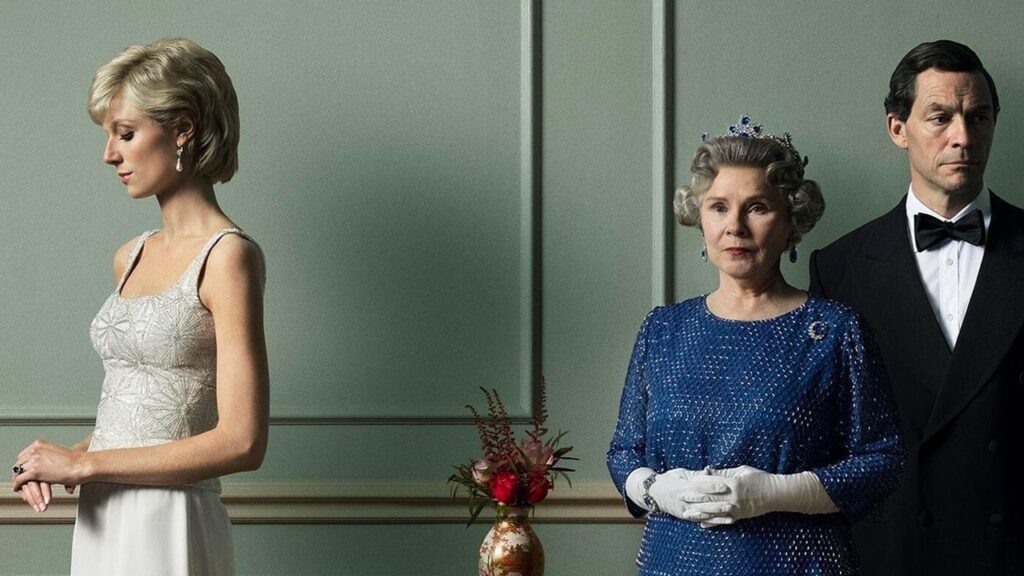Summary: Season 5 of “The Crown” uses dramatic licence; some have criticised the show for portraying fiction as fact, however this is where they err on the side of history.
Season 5 of The Crown uses dramatic licence.
“The Crown” has drawn criticism for portraying fiction as fact.
Drama is abundant in Netflix’s hugely successful dramatisation of the life of the contemporary British royal family—possibly too much for some viewers.
On Wednesday, Season 5 made its debut, and it was immediately stirring much debate.
The reason for this is that former British Prime Minister Sir John Major criticised the film, calling a sequence in which he and Prince Charles (played by Dominic West) discuss a plot to remove Queen Elizabeth from the throne while Major was in power “a bucket load of nasty nonsense.”
In a letter to The Times, actress Judi Dench signed on to ask Netflix to include a disclaimer to the series.
No one believes in artistic freedom more than Dench, but this cannot go uncontested. Despite officially acknowledging last week that The Crown has always been a “fictionalised drama,” the show’s creators have defied requests to include a disclaimer at the beginning of each episode.
Even while it occasionally embellishes the facts, the series does contain some real historical events.
Here are a few subtle but impactful instances where the show alludes to historical events.
The unhappy union between Prince Charles and Princess Diana
The beloved royal couple is seen leaving for what was intended to be a lovely vacation but is not as the story opens.
The show does a superb job of capturing how sad Princess Diana and later Prince Charles were. We are unsure if little Prince William and Prince Harry supported their mother over their father during holiday activities.
They discuss everything, from 1996’s explosive “Diana” book by Andrew Morton, on which she worked in the background, to the embarrassing release of then-Prince Charles and his current wife Camilla’s impure phone talks, which caused a big scandal due to infidelity.
Even while it seems torturous on television, it seems like the couple’s circumstances were much worse in reality.
Using the fire at Windsor Castle as a parable
1992 is referred to by Queen Elizabeth as her “annus horribilis” in her speech marking her 40th year on the reign.
She said, “1992 is not a year on which I shall look back with pure pleasure.”
She had a terrible year for several reasons, one of which was a fire at Windsor Castle that burned almost 100 rooms.
The fire isn’t a key development in the story, but rather a scene in which Imelda Staunton as Queen Elizabeth views the destruction that seems to be a metaphor for her family’s issues and, by extension, those of her country.
The relationship between Penny Knatchbull and Prince Phillip
Although Penny Knatchbull wed the godson of the Duke of Edinburgh, her relationship with Prince Phillip went deeper than that.
Following a family tragedy, Prince Phillip intervenes to assist Knatchbull, which results in years of their relationship deepening.
She progressed to become “the second-most important lady to the Duke of Edinburgh — a constant confidante, devoted companion, and ‘keeper of secrets’.” Ingrid Seward’s 2020 book “Prince Philip Revealed” had a chapter on Prince Philip.
The much-older Prince Phillip was not romantically attracted to Knatchbull, as is emphasised in “The Crown,” but rather they became friends over shared hobbies like carriage riding.
That REVERSE outfit
Prince Charles admitted during an ITN show in 1994 that he had not been completely loyal to Princess Diana. Princess Diana left the ceremony wearing a black, off-the-shoulder Christina Stambolian gown known as “the revenge dress.”
In the performance, Elizabeth Debicki, who is winning praise for her portrayal of Princess Diana, recreates the now-iconic scene.


